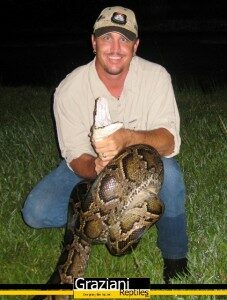The pastel ball python gene is in my option one of the most under rated genes out there. I absolutely love pastels and put a huge value on them in regards to my own personal collection. First off, the pastel is a co-dominate mutation, meaning if I breed a pastel to normal non gene carrying animal then statistically speaking half of the offspring should be pastels the other half should be normal.
Talking it a step further if you breed two pastels together you statistically should end up with 25% of the clutch being normal, 50% of the clutch being pastels and 25% of the clutch being super pastels! The fact that there is a super form is what makes this gene so powerful in any breeder’s collection. Having a nice number of female pastels in your collection is a really cheap way to produce some really cutting edge animals. For one, pastel goes with just about every gene or mutation out there, in fact I really can’t think of a combination that doesn’t look better with the pastel ball python gene included.
Background and History of the mutation
We have none other than Greg Graziani to thank for bringing this awesome gene to market back in the late 90’s. Greg imported in what he thought was a ghost ball python from Africa only to breed the original animal and find that it reproduced itself in the first generation unlike the ghost which takes two generations to reproduce, plus these animals looked much different as babies they ghosts.

Greg went on to name this new gene the “pastel jungle” because they were really yellow and bright and the name jungle because these original animals had a very busy pattern which looked a lot like jungle ball pythons that have been around for much longer. Just for the record the jungles have proven to not be a genetic mutation but more or less a random occurrence that happens from time to time.
Odd behaviors or occurrences with the gene
When writing about a gene I also like to include any perks, quirks or defects I’ve observed when working with the gene and I can honestly say that I haven’t noticed any irregularities or oddities with this gene. It really seems by all means to act just like a normal ball python. Now I have heard some complaints from other breeders about feeding issues, but I haven’t experienced that and I’ve only heard that complaint a couple of time and I don’t put much weight behind it.
Combination potential
When it comes to creating designer ball pythons there really isn’t a better base morph than the pastel ball python. The gene has a very nice super form and there are no known negative effects from breeding pastel to pastel so you never have to worry about being about to breed one combo animal to another which both carry the gene. I say that because there are genes out there that are known to produce lethal supers or lethal combinations when combined with other genes, that’s not at issue at all what so ever with this particular mutation. With that, I would give this gene a 8 out of ten rating, I would go with 10′s across the board but due to the fact that’s it’s extremely common knocks it down to an 8 from a perfect 10.
Current market status
The market for this gene is very solid at the level it’s at which is truly a buyer’s market. It’s down considerably from 5-6 years ago when I remember super pastel males selling for as much as $10,000 I actually paid $1,000 for my first pastel back in 2004. These days hatchling females are extremely  undervalued in my option, but this is easily combated by raising hatchling up for a year or so and selling them as sub adults. The market for sub adult or adult female pastels is absolutely booming with adults going for about 8-10x’s the rate of hatchlings. The market for males is overly saturated and adults aren’t worth much more than hatchlings these days. The reason for this is simply because you can never have too many base morph females to breed your high dollar cutting edge males too, the same can’t be said for males obviously. I often unload my males by doing trade deals for them to the local pet store in exchange for surplus rodents, it works out pretty well because they sell really fast at the pet store level and I never have enough rodents.
undervalued in my option, but this is easily combated by raising hatchling up for a year or so and selling them as sub adults. The market for sub adult or adult female pastels is absolutely booming with adults going for about 8-10x’s the rate of hatchlings. The market for males is overly saturated and adults aren’t worth much more than hatchlings these days. The reason for this is simply because you can never have too many base morph females to breed your high dollar cutting edge males too, the same can’t be said for males obviously. I often unload my males by doing trade deals for them to the local pet store in exchange for surplus rodents, it works out pretty well because they sell really fast at the pet store level and I never have enough rodents.